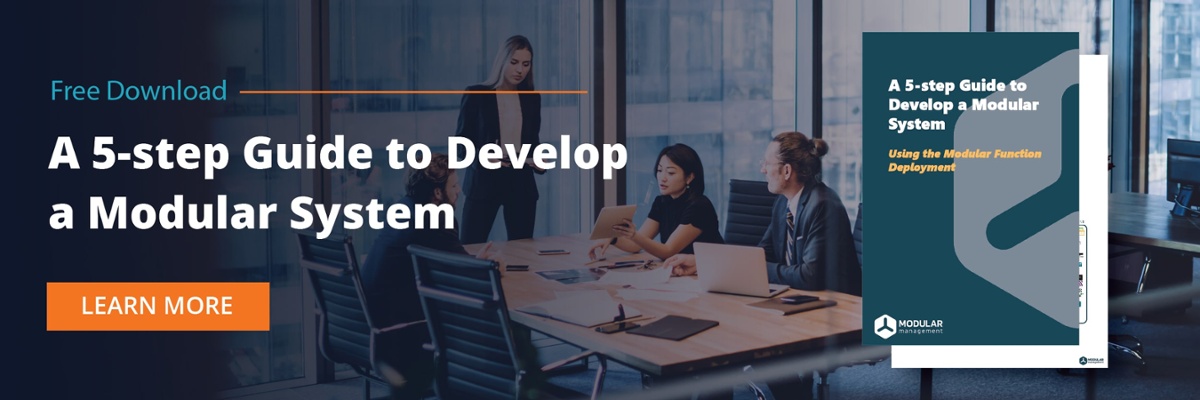In this blog post, we explore the transformative power of modular product design as companies transition from traditional business models to embrace the principles of the circular economy. This shift, while challenging, offers a unique opportunity to balance financial success and sustainability commitments. By adopting modularization, companies cannot only resolve these conflicts but also unlock the potential for creating both financial and environmental value.
How Adopting Carbon Accounting Today Will Impact Your Product Architecture Tomorrow
In the evolving corporate sustainability landscape, many companies are embracing Science-Based Targets (SBT), a move that signals a genuine commitment to transformative change and holds the potential for significant benefits. However, conversations with our clients indicate that the path to a circular economy needs to be more straightforward.
Eager to get going, many firms need help to move forward, and they are frustrated from being squeezed between stakeholders and policymakers, with current profit models and growth expectations on the one hand and increasingly painful emission regulations on the other. In theory, the crux is finding a sustainable monetization model, yet business leaders are fumbling in the dark as options remain scarce. In the wake of this, there is a growing body of papers exploring how growth and profitability can be decoupled from resource extraction, and increasingly often, modularization is mentioned as a cornerstone in this emerging circular economy. You will understand why in a minute.
First, it’s crucial to recognize that companies committed to Science-Based Targets (SBT) must also adopt carbon accounting, often referred to as scope 1, 2, and 3 emissions reporting. While this may initially seem complex, understanding it is vital as it directly influences future product design. Further insights on this topic are provided below.
Before delving into the connection between carbon accounting and product design, it is important to unfold the situation most such businesses are facing. Recently, I browsed through the sustainability reports of hundreds of publicly listed manufacturing companies that have adopted the SBT framework. The conclusion? The majority of emissions derive from the usage of sold products, falling under the umbrella of Scope 3 emissions. In fact, this part is so predominant in most manufacturing firms that directing attention elsewhere could easily be dismissed as greenwashing...

Figure 1a) Description of Scope 1, 2, 3 emissions. 1b) Typical emission profile of a global manufacturer.
However, the emission profiles become much more interesting in the context of the ambitious reduction targets, made public in various sustainability reports. Many companies rely on new product development, increased product efficiency, and sometimes even grid decarbonization. I'm not saying that these factors are unimportant in the short term, but the impact of these measures is likely to have less and less impact over time. In addition, most companies have reduction targets set for 2030, which, contrary to perception, is not very far away… And one thing is for sure, 2030 is not the endgame regarding sustainability. Hence, one fundamental question arises here. When the impact of current measures converges, how do you reduce the carbon footprint of already-sold products?
Product Ownership is Shifting – The Urgent Need to Own & Control Assets
Business leaders worldwide have, of course, started to realize the arising problem. Unsurprisingly, the interest in shifting product ownership from consumer to manufacturing firms has increased rapidly. Circular business models such as Product-as-a-Service (PaaS) are popping up everywhere, and it is not a coincidence. Again, how do you reduce emissions from already sold products? What if you never sell them?
By shifting back the product ownership to the manufacturer, the dilemma between environmental and financial performance can be attacked from a new angle. Theoretically, if a company remains in control of its assets, it becomes possible to loop back any part of the product and make it enter a new product lifecycle.
 Figure 2: Manufacturers that remain in control of their assets can improve products over time
Figure 2: Manufacturers that remain in control of their assets can improve products over time
This would allow companies to turn their negative trash flow into a positive cash flow. However, the amount of cash will, of course, be proportional to the labor intensiveness, which naturally depends on the time spent on disassembling and reassembling. From this point of view, it is easier to understand the role of modularization and how a configurable modular product design can reduce the cost of remanufacturing and support improved profitability.
One of our clients said “Our circular business models would be much more profitable if it weren't for the fact that our linear business models are still reflected in our products.” The client referred to the lack of modularity and interchangeability that prevented them from profiting as expected in their remanufacturing program. On the same theme, I have also talked to another client that recently started to sell refurbished and repurposed products at a lower cost to less developed markets. Hence, opening otherwise overseen markets and adding a little bit to that desirable growth without cannibalizing existing sales. Second hand could become first choice in the third tier.

Figure 3: The Value Hill across different use-phases in a linear vs circular economy
IKEA, Volvo, and Caterpillar Are Leading the Way
For a more visual exploration of a modular approach to the circular economy concept, I recommend checking out this 2-minute video by IKEA. Although merely illustrative, most of us relate to IKEA’s modular assortment, making it less complicated to imagine one of their bookshelves repurposed into various other furniture, like a chair or bedside table.
However, acknowledging potential skepticism about the feasibility within more complex industries, I would also like to highlight Volvo’s exceptional refurbishing of heavy-duty engines. This sophisticated system sets the benchmark for achievable remanufacturing. I also know that Caterpillar follows suit with a similar remanufacturing program, citing that remanufactured engines require only a fraction of the resources needed to mine, process, and manufacture the same engine from scratch.
How to Modularize for the Circular Economy
The connection might be intuitive to some, but fundamentally, it boils down to equipping the product architecture with well-thought interfaces. Creating optimal interfaces is easier said than done, though. It is also very much about isolating specific needs in the products since not all parts of a product share the same purpose.

Figure 4: Not all parts of a product share the same purpose
For instance, specific modules exhibit a standard functionality across diverse product platforms, allowing seamless reusability in alternative products contributing to a more sustainable production and less cost of complexity. Conversely, some modules may house hazardous or high-value materials, necessitating distinct recycling or recovery processes. Noteworthy are the wear-and-tear modules, demanding easy replaceability and repairability. This intricate web of considerations spans across each "R" in the renowned 9R-framework, illustrating the multifaceted nature of achieving circularity through modularity illustrated below:

Figure 5: Modularity in the context of the 9R-framework
But how should you cut your product to optimize the outcome on all stakeholder dimensions? One proven method has been this five-step method. The method efficiently captures the external market requirements, but also provides the guiding directions necessary for optimal complexity when translating market needs into product properties with varying performance steps. This outside-in approach enables companies to build their market requirements into their architecture.
At the same time, various technical concepts and solutions can typically fulfill the specified performance steps. A structured concept evaluation tool is recommended to avoid sub-optimal concept selections. Decisions concerning the type of material, assembly method, and expected lifespan made during the early design stages will significantly influence a product’s quality, cost, esthetics, sustainability, and circularity performance over the product lifecycle. Hence, it is also crucial to consider internal criteria in the evaluations as well.
The selected concepts are then typically evaluated with respect to variance behavior and strategic intent, which eventually becomes input to which cluster of solutions that could be grouped into the modules. This is typically where we start to know how the product architecture should be cut into pieces, i.e., modules, but also how the modules interrelate via module interfaces.
Going circular or not, the actual modularization is a topic on its own, but we have a purpose-built tool made for this journey. If you are interested, I suggest to reading more here.
Summary and Conclusion
To summarize, we see an increasing number of clients preparing their product architecture for the circular economy, and many circular business models are already visible in the market. However, as stated in this blog post, the success of a circular business model is very much connected to underlying product architecture and, more specifically how easy it is to disassemble and reassemble. We have proven methods, tools, and more than 25 years of experience in helping clients create the modules and interfaces they need. Contact me directly via email below or on my LinkedIn if you'd like to discuss the topic covered, or if you wish to have a sounding board in general around modularity and the circular economy.
Rikard Bodén
Senior Consultant
rikard.boden@modularmanagement.com
LinkedIn




